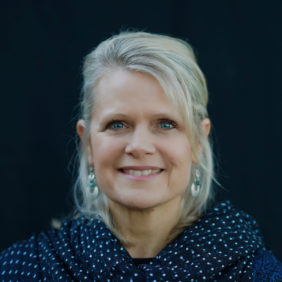We’ve talked a lot about the importance of instilling inclusivity and equity as core values in your organization: what that looks like and how to lead with inclusion and equity in mind.
And you’ll see it all over the internet: the benefits organizations can realize when they focus on increasing inclusion and equity in the workplace as well as programs to develop the required mindsets, skill sets, and behaviors. Many organizations pay lip service to diversity, equity, and inclusion as core values but few organizational cultures today otherwise manifest those values in a visible way.
The conversation that’s most important for us to be having is this one: how do we create the conditions where intentional inclusion is not viewed only as something we need to do but also as something we want to do?
If we’re simply telling our mid-level managers that increasing diverse representation and inclusion are important, but we aren’t supporting them in learning how to do that, many will end up stalling in these efforts. Often, they stall because they really don’t know where or how to start and because our internal policies and systems don’t make it easy to do.
Three areas where representation can be less visible are gender identity, gender expression, and sexual orientation. Just because someone presents at work as a cis-gendered, heterosexual woman doesn’t mean that they really identify that way. As a leader, it’s important to be aware that societal frameworks and our understanding of gender identity, gender expression, and sexual orientation have been and are actively and rapidly evolving. You don’t have to become an expert in these areas in order to start adjusting your language and actions in ways that will affirm and acknowledge that reality.
Open the Door to the Ask
For many Gen X-ers and older, the idea of gender non-conforming/non-binary people or gender fluidity can be especially puzzling. Often, those of us with teenage and young adult children at home, like me, are getting schooled by them for the first time on some of the basics. And fortunately for our kids, it’s also something we’re finally starting to learn about and discuss openly in some of our workplaces.
Sometimes we are still unsure about what’s what and we may be afraid to ask questions for fear of our own discomfort or that we will seem hopelessly out of touch. But being kindly curious and asking questions is an important step if we want to learn and grow.
Your Own Vulnerability is a Start
Just because someone looks as though they are a woman to you doesn’t mean that’s how they identify. To call someone “she” after that person has asked you to refer to them as “they” is harmful. Doing this intentionally and repeatedly is a form of microaggression.
But what do you do when people haven’t shared their pronouns with you and vice versa?
First, be vulnerable and open to conversations from which you can learn. Then, offer opportunities (not mandates) for others to share their own identities–by sharing yours first.
- Part of the new hire process could be a human resources team member introducing themselves. “I’m Alice and my pronouns are she/her. It’s nice to meet you.” This instantly lets people know that the organization is a safe space to share one’s identity. That can go a long way toward helping people feel more comfortable sharing their own identity.
- On your own email signature, LinkedIn profile, Zoom name, etc., add your pronouns. Showing that you acknowledge that pronouns aren’t a given demonstrates a willingness to accept others who don’t fit the cis-gendered norm. For a great guide on the ins and out of pronouns, I recommend downloading Out and Equal’s Pronouns Guide.
It’s important that this be something modeled by leadership, but not mandated; mandating pronoun declarations can “out” someone who isn’t ready to publicly express their gender identity.
- Expose yourself to gender-based diversity in a neutral space. Talking about gender identity, expression and sexual orientation at work may initially feel very uncomfortable for you, especially if you’re just starting to do the work. There are a number of books, movies, and television shows that can help you learn more and get more comfortable with the vocabulary and the idea of gender fluidity. (This is especially true if you’re feeling strong internal resistance to acceptance. We all have our biases and limited frame of reference; the fact that you’re reading this now is a great start.)
Here are some resources we recommend to get you started: Laverne Cox’s documentary, Disclosure, and the show Pose on Netflix are great starting points. Also good are movies that celebrate the transgender experience or explore sexual orientation and gender identity.
Like all forms of identity, keep in mind there is a spectrum of privilege that goes along with gender identity, gender expression, and sexual orientation And there is intersectionality. The lived experiences of a white, non-binary person are very different from that of a black, gay man. You won’t likely become an expert in most of these identities and that’s okay. Your goal isn’t to acquire expertise, it’s to build basic working understanding and empathy.
While you’re working to become more inclusive in your mindsets, skill sets, and behaviors at work, start with learning about the experiences of people holding the most marginalized identities. This could be transgender people of color. Engage in some perspective-taking – ask yourself what you think it might take to make that person feel like they belong. But don’t stop there. Get to know some people who hold those identities and are willing to talk about their experiences with you. Slowly work forward to identify meaningful solutions from there.
Something that we’ve learned, certainly in 2020 but hopefully even before that, is that we don’t always know what’s going on internally with anyone–sometimes even ourselves. A growth mindset, kind curiosity, and open-mindedness serves us well in holding space for ourselves and others to navigate that uncertainty with grace. Your willingness and sincere efforts to try can go a long way to making inclusivity a lived reality in your organization even before your actual understanding catches up.


 Heather Leavitt-Martinez (she/her/hers) – Senior Product Manager
Heather Leavitt-Martinez (she/her/hers) – Senior Product Manager Wendy Ryan (she/her/hers) – CEO
Wendy Ryan (she/her/hers) – CEO Shawn Bunger (she/her/hers) – Senior Consultant
Shawn Bunger (she/her/hers) – Senior Consultant Crystal Whiteaker (she/her/hers) – Senior Consultant
Crystal Whiteaker (she/her/hers) – Senior Consultant Gail Finger (she/her/hers) – Senior Consultant
Gail Finger (she/her/hers) – Senior Consultant Monica Silkwood (she/her/hers) – Director of Operations and Experience
Monica Silkwood (she/her/hers) – Director of Operations and Experience Johanna Lyman (she/her or they/them) Senior Consultant
Johanna Lyman (she/her or they/them) Senior Consultant Sherri Horan (she/her/hers) – Senior Consultant
Sherri Horan (she/her/hers) – Senior Consultant